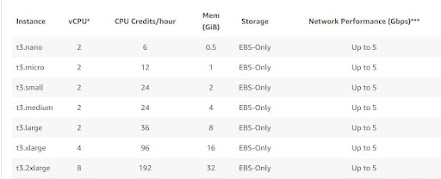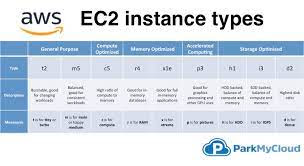AWS EC2 Types

T3 instace : T3 instances are the next generation burstable general-purpose instance type that provide a baseline level of CPU performance with the ability to burst CPU usage at any time for as long as required. T3 instances offer a balance of compute, memory, and network resources and are designed for applications with moderate CPU usage that experience temporary spikes in use. T3 instances accumulate CPU credits when a workload is operating below baseline threshold. Each earned CPU credit provides the T3 instance the opportunity to burst with the performance of a full CPU core for one minute when needed. T3 instances can burst at any time for as long as required in Unlimited mode. Features: Burstable CPU, governed by CPU Credits, and consistent baseline performance Unlimited mode by default to ensure performance during peak periods and Standard mode option for a predictable monthly cost Powered by the AWS Nitro System, a combination of dedicated hardware an...

